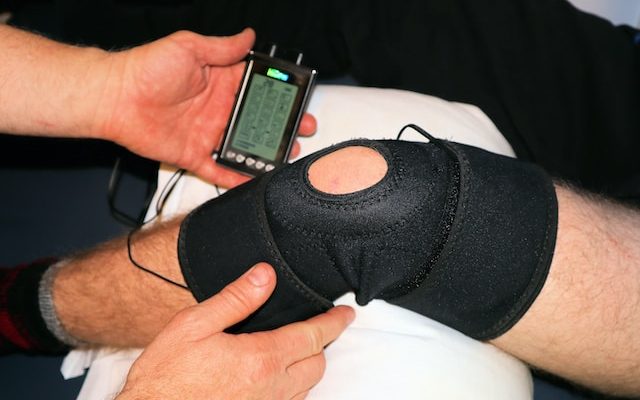10 Natural Pain Relief Strategies for Knee Osteoarthritis

Living with knee osteoarthritis can be challenging, as the pain and stiffness in your knees may limit your mobility and affect your overall quality of life. While there are various treatment options available, many individuals seek natural remedies to alleviate their knee osteoarthritis symptoms.
In this article, we will explore ten effective and natural pain relief strategies for knee osteoarthritis that can help improve your comfort and promote better joint health.
Table of Contents
- 1. Regular Exercise and Physical Activity
- 2. Maintain a Healthy Weight
- 3. Apply Heat and Cold Therapy
- 4. Try Topical Pain Relief Options
- 5. Explore Herbal Supplements
- 6. Consider Acupuncture
- 7. Opt for Massage Therapy
- 8. Practice Mind-Body Techniques
- 9. Use Assistive Devices
- 10. Adopt Joint-Friendly Lifestyle Habits
- Conclusion:
1. Regular Exercise and Physical Activity
Engaging in regular exercise and physical activity is essential for managing knee osteoarthritis pain. Low-impact exercises like walking, swimming, and cycling can strengthen the muscles around your knees, improve joint stability, and enhance flexibility.
Consider incorporating these activities into your routine, aiming for at least 30 minutes of exercise on most days of the week.
2. Maintain a Healthy Weight
Maintaining a healthy weight is crucial for reducing the burden on your knee joints. Excess weight puts additional stress on the knees, leading to increased pain and inflammation.
Adopting a balanced diet, rich in fruits, vegetables, lean proteins, and whole grains, can help you achieve and maintain a healthy weight, relieving pressure on your knees.
3. Apply Heat and Cold Therapy
Heat and cold therapy can provide temporary relief from knee osteoarthritis pain. Applying a heating pad or warm compress to your knees can help relax muscles, improve blood circulation, and reduce stiffness.
On the other hand, cold therapy, such as ice packs or cold compresses, can help reduce inflammation and numb the area, easing pain and swelling.
4. Try Topical Pain Relief Options
Topical pain relief options, such as creams, gels, or patches, can offer localized relief for knee osteoarthritis pain. These products often contain ingredients like menthol, camphor, or capsaicin, which provide a cooling or warming sensation that distracts from the pain and reduces inflammation.
Apply the topical pain relief product directly to the affected area for targeted relief.
5. Explore Herbal Supplements
Certain herbal supplements have shown promise in managing knee osteoarthritis pain. For example, turmeric, ginger, and Boswellia are known for their anti-inflammatory properties.
However, it’s essential to consult with your healthcare provider before incorporating any herbal supplements into your routine, as they may interact with medications or have other potential side effects.
6. Consider Acupuncture
Acupuncture, an ancient practice rooted in Traditional Chinese Medicine, involves inserting thin needles into specific points on the body. It is believed to stimulate the body’s natural healing processes and relieve pain.
Some individuals with knee osteoarthritis have reported positive results from acupuncture sessions, although more research is needed to understand its full effects.
7. Opt for Massage Therapy
Massage therapy can help alleviate knee osteoarthritis pain by improving blood circulation, reducing muscle tension, and promoting relaxation.
A skilled massage therapist can target the affected knee and surrounding muscles, using techniques such as Swedish massage, deep tissue massage, or myofascial release. Regular massage sessions may help manage pain and enhance joint mobility.
8. Practice Mind-Body Techniques
Mind-body techniques, such as meditation, deep breathing exercises, and guided imagery, can help manage knee osteoarthritis pain by reducing stress and promoting relaxation.
Stress can worsen pain perception, so incorporating these techniques into your daily routine can help you cope better with the discomfort and improve overall well-being.
9. Use Assistive Devices
Assistive devices can provide support and relieve stress on your knee joints. Knee braces, orthotic inserts, or walking aids, such as canes or crutches, can help stabilize your knees, improve alignment, and reduce pain during movement.
Consult with a healthcare professional to determine the most suitable assistive devices for your specific needs.
10. Adopt Joint-Friendly Lifestyle Habits
Incorporating joint-friendly lifestyle habits can contribute to pain relief in knee osteoarthritis. Practice good posture, avoid prolonged periods of standing or sitting, use proper body mechanics when lifting or bending, and take regular breaks to rest your knees.
These habits can help minimize strain on your knee joints and protect them from further damage.
Conclusion:
Living with knee osteoarthritis doesn’t have to mean enduring constant pain and discomfort. By implementing these ten natural pain relief strategies into your daily routine, you can effectively manage knee osteoarthritis symptoms and improve your quality of life.
Remember, it’s always essential to consult with your healthcare provider before trying any new treatments or remedies, especially if you have underlying medical conditions or are taking medications.
Embrace these natural approaches and empower yourself to find relief from knee osteoarthritis pain.










